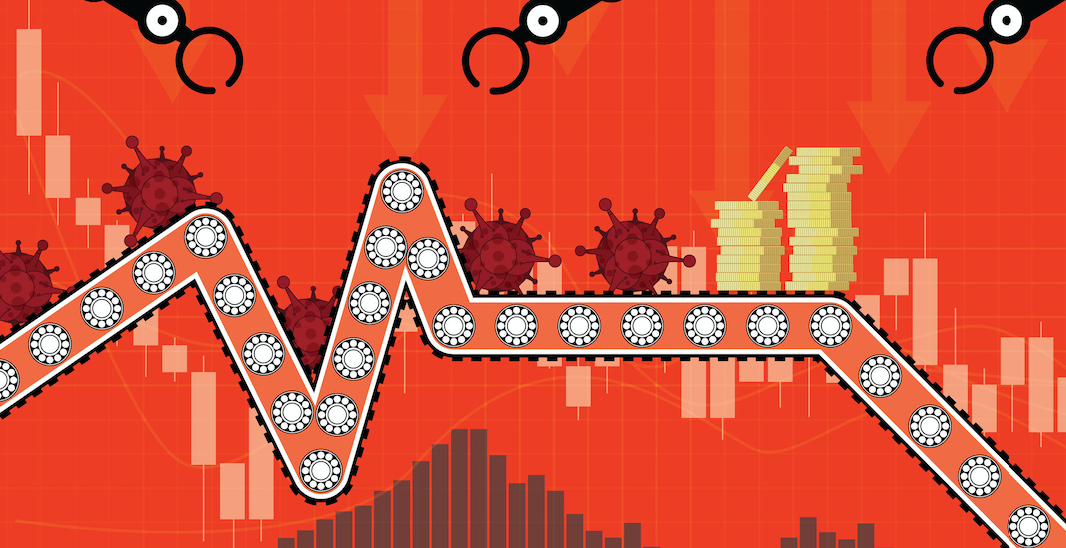06.27.2025
Sausage casings bulletin, June 27, 2025

Runner market commentary
...

One year ago, today, the World Health Organization declared the coronavirus a global pandemic. At the end of that Wednesday in 2020, equity markets were down some 20%, after sliding for weeks in gloomy anticipation. What followed, with widespread school and business closures, and even a ban on travelers from Europe, could not have been predicted. We speculated that hemp prices would not change significantly as a result of thepandemic, and this is generally how hemp markets reacted.
The scope of impact on the global economy is still unknown. Equity markets have rallied in unique ways as investors ride a tidal wave of gains, partly tied to “reopening” sectors, but also the general performance of much of the economy. COVID has had its fingerprints all over the market shifts that caused a sharp rise in unemployment for specific subsets of workers. In contrast, white collar workers have been afforded more opportunity, or at thevery least, flexibility, requiring only power and internet to carry out their duties. Families with children have had their lives turned upside down, some for the better, others very much not.
The high THC aspect of the cannabis sector reaped enormous benefit from disaster, and thedesignation of MJ dispensaries as essential businesses made a bold political statement that lawmakers noticed. They have also noticed the hundreds of millions of tax dollars raked in by states with adult use programs. We’ve discussed how COVID has changed the political conversation around legalization efforts at the state and federal level, partly due to revenue shortfalls in some states.
The federal response to the pandemic is where hemp people and businesses have benefitted or stand to in the near future, with $1400 direct payments to eligible taxpayers. Recent Hemp Bulletin commentary has centered around high commodity crop prices and how that may impact the 2021 growing season. On the one hand, high corn and soybean prices compete with crushers looking to contract hempseed, prompting some strengthening in forward contracts in the Northern Plains.
On the other hand, high commodity prices may enable farmers to undertake hemp projects that would not be practical in the economic landscape of 2020. Production for hemp fiber will occupy few overall acres – relative to cannabinoids and hempseed – but fiber acreage is likely to increase some in 2021, as farmers continue to trial varieties and equipment, in anticipation of increased demand.
The extra dollars injected into the economy via stimulus will have some impact on hemp products, both retail and wholesale. Many of the thousands of small CBD businesses will benefit from the payments, and their customers will also have more disposable income for expensive wellness products. More money in the economy, lots and lots of it, is naturally going to help in retail markets as people make luxury purchases of everything from CBD makeup to CBD pet treats.
The disruption to brick-and-mortar retail shifted more CBD purchases online, both small regional and local brands, but also large CPG companies with shelf space. This forced operators to be creative in their marketing, but many small and midsized operators have been riding the ∆8-THC wave, that along with hemp flower, has generated the most attractive returns in hemp markets. Stimulus payments will have the most impact in retail flower and cannabinoid markets, with ∆8 likely outperforming other cannabinoids. If ∆8 demand continues on its current trajectory, we could see pricing shifts for CBD extracts.
Setting aside tragic personal loss, many in the hemp sector are better off than they were one year ago. COVID is certainly a key factor prompting favorable policy moves and funding opportunities. Other factors are providing enormous synergy and momentum to hemp related initiatives, and agriculture in general. The new administration is one of these, as is the Senate.
Any movement to stabilize hemp markets, like through broad action on cannabis banking, will have outsized impacts on these markets. Policy moves like this, along with an emerging boom mentality, will serve as multipliers for developing hemp markets.
06.24.2025
Correction to sausage casings, resale, North American hog runners, whiskered, ex-works North America on June 20: pricing notice

North American hog runners price published on Friday was incorrect due to a formula miscalculation. The original reported price of $1.63 has been corrected to the accurate rolling average...